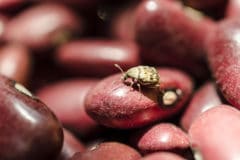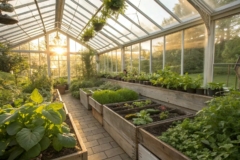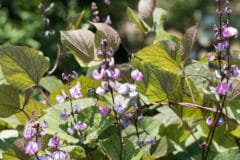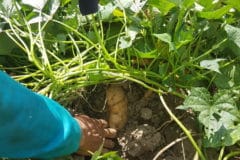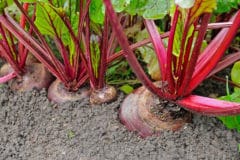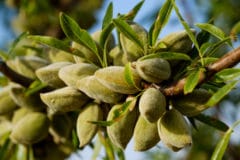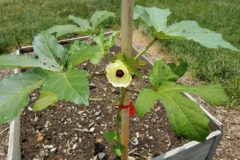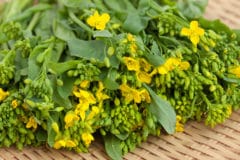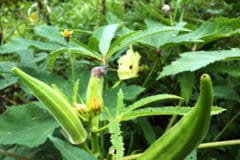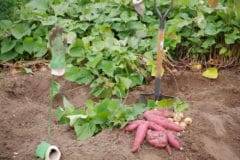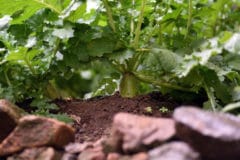Search Result
https://www.garden.eco/dead-tree-landscape-ideas
Have you ever felt the sting of loss when a beloved tree in your garden reaches its journey’s end? I…
https://www.garden.eco/dead-tree-landscape-ideas
https://www.garden.eco/bean-beetle
In the US, the term bean beetle usually refers either to the Mexican Bean beetle or the cowpea seed beetle.…
https://www.garden.eco/bean-beetle
https://www.garden.eco/companion-plants-for-zucchini
Certain plants seem to naturally complement other plants. Sometimes this occurs when two plants which are not competing for the…
https://www.garden.eco/companion-plants-for-zucchini
https://www.garden.eco/greenhouse-planter-box-ideas
html Greenhouses are more than just spaces—they’re little paradises where the world really is your oyster. Imagine stepping inside, surrounded…
https://www.garden.eco/greenhouse-planter-box-ideas
https://www.garden.eco/bean-vine
Lablab purpueus, or purple hyacinth bean. is an extremely showy ornamental vine graced with several nicknames such as Indian Bean,…
https://www.garden.eco/bean-vine
https://www.garden.eco/budget-landscaping-ideas
Landscaping doesn’t have to mean emptying your wallet—with a little inspiration and a willingness to roll up your sleeves, you…
https://www.garden.eco/budget-landscaping-ideas
https://www.garden.eco/harvesting-yams
If you planted yams in your garden and nurtured them faithfully throughout the season, you are probably anxious to take…
https://www.garden.eco/harvesting-yams
https://www.garden.eco/east-facing-garden-ideas
The secret to a thriving east-facing garden? It’s knowing how to soak up the morning sun while savoring cooler afternoons.…
https://www.garden.eco/east-facing-garden-ideas
https://www.garden.eco/growing-beets
Beets are an easy-to-grow, nutritious vegetable that can be grown at least three seasons of the year. They can be…
https://www.garden.eco/growing-beets
https://www.garden.eco/how-do-almonds-grow
Ask most people to name some common nuts, and almonds would probably be in the mix along with peanuts, walnuts,…
https://www.garden.eco/how-do-almonds-grow
https://www.garden.eco/when-to-plant-swiss-chard
Mangold is available in many variants. Especially the varieties with multicoloured stems like “Bright Lights” are the ones that bring…
https://www.garden.eco/when-to-plant-swiss-chard
https://www.garden.eco/growing-okra-in-containers
Okra is such a large plant that you might think it couldn’t be grown in a container. The truth is,…
https://www.garden.eco/growing-okra-in-containers
https://www.garden.eco/okra-companion-plants
All plants, okra included, can have beneficial relationships with some plants but detrimental relationships with others. Relationships between companion plants…
https://www.garden.eco/okra-companion-plants
https://www.garden.eco/turnip-flower
Turnips are biennial plants that because, after overwintering, they flower and form seeds in their second year. However, turnips can…
https://www.garden.eco/turnip-flower
https://www.garden.eco/growing-okra
Don’t think that okra can only be grown in warm climates. With a little patient waiting for warmer temperatures, it…
https://www.garden.eco/growing-okra
https://www.garden.eco/sweet-potato-spacing
Given the right variety, good growing conditions and enough space, the sweet potato can produce prodigious amounts of food. A…
https://www.garden.eco/sweet-potato-spacing
https://www.garden.eco/sweet-potato-companion-plants
At one time, all gardeners used companion planting strategies. Without insecticides and herbicides – which organic gardeners prefer not to…
https://www.garden.eco/sweet-potato-companion-plants
https://www.garden.eco/growing-turnips
Turnips are members or the Brassica family, and, like their cousins – cabbage, kale, collards, cauliflower, Brussels sprouts, broccoli, and…
https://www.garden.eco/growing-turnips
https://www.garden.eco/growing-turnip-greens
Like other members of the Brassica family that are grown for their leaves – collards, cabbage, and kale – turnip…
https://www.garden.eco/growing-turnip-greens
https://www.garden.eco/when-to-plant-turnip-greens
Turnip greens are at their best when grown in the fall when cool temperatures and frosts can sweeten their taste.…
https://www.garden.eco/when-to-plant-turnip-greens
81 - 100 results of 100
Shown 81 - 100 results from 100

